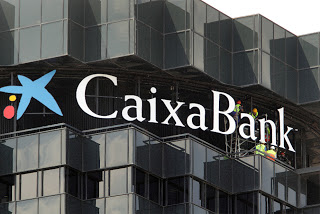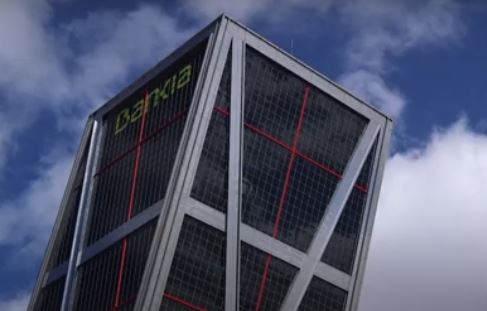Spanish lenders CaixaBank and Bankia mull €17bn merger
CaixaBank and Bankia have confirmed talks to explore a merger which could create Spain’s largest lender.
CaixaBank is the third largest bank in Spain by assets, whilst Bankia is the fifth. Together, the two would hold assets of more than €650 billion ($768 billion).
Bankia’s shares shot up 29% in early trading on Friday, the most they’ve increased in seven years according to Bloomberg. CaixaBank’s shares gained a smaller 15%.
An all-share merger would give the banks a combined market capitalisation of €16.6 billion.

CaixaBank is about three times the size of Bankia
Size of the banks
Bankia was formed in December 2010, consolidating the operations of seven regional savings banks in Spain.
It was partly nationalised in May 2012 after it nearly collapsed. The Spanish government currently holds a 61.8% stake in it.
CaixaBank is about three times the size of Bankia. It has 3,846 branches in Spain, and more than 35,000 employees, with a market value of almost €11 billion.
Bankia, which focuses on mortgages, has 2,267 branches, a workforce of nearly 16,000, and a market value of €3.2 billion.
Size of the deal
Together, the two would be taking on Spain’s two largest banks – Banco Santander and Banco Bilbao Vizcaya Argentaria (BBVA).
They would be the largest lender in Spain by loans, assets and deposits, according to Citigroup calculations.
Citi also estimates it would have a market share in Spain of 23% by assets, 26% by loans and 24% by deposits.
Sources told Bloomberg that Bankia chairman Jose Ignacio Goirigolzarri would be chairman of the new entity. CaixaBank’s Gonzalo Gortazar would step in as CEO.
Whilst Caixa Foundation would hold the largest stake in the new venture – sitting at about 30% – Spain’s bank rescue fund ‘Frob’ would hold about 17%, according to Citi.
What the deal would do
Barclays estimates that this merger could lead to annual cost savings of around €500 million.
CaixaBank currently holds its roots in Catalonia, which holds a greater role in Spain’s economy than its 6.3% share of Spain’s territory suggests.
In 2017, the year Catalonian politicians tried to secure independence from Spain, about €37 billion was flowing through Catalonia in foreign investments. That was more than one-quarter of inward investment to Spain as a whole.

Bankia officials racked up €12 million in corporate expenses
Its merger with Bankia would see it extend its presence to Madrid, the country’s capital.
It could also see other major lenders consider consolidation plays.
Bankia has a muddy history leading up to its part-nationalisation. Its ex-chairman Rodrigo Rato is currently serving a 4.5 year prison sentence.
He and 63 other Bankia officials racked up €12 million in corporate expenses. Rato’s involvement in Bankia’s initial public offering (IPO) in 2011 is also under investigation.
He and other former managers allegedly falsified accounts and provided false data.
Now, with a potential CaixaBank merger on the horizon, Bankia’s troubled history is likely to be overshadowed by CaixaBank’s much brighter track record.
Consolidation in wider Europe
Elsewhere in Europe, banks are eyeing up consolidation plays. In February, Intesa announced its €4.9 billion ($5.3bn) bid for local rival UBI.
The bid is part of its Italian bank consolidation play in a fragmented banking landscape largely dominated by itself and UniCredit.
Intesa has said the acquisition of UBI would create the euro zone’s seventh-largest banking group.
State-owned Italian bank, Monte dei Paschi di Siena, is looking into a potential merger with Banco BPM, according to Reuters reports in July.
The Italian treasury, which owns a 68% stake in the bank, is aiming to sell its holdings. The move, hot on the heels of Intesa-UBI talks, shows the domino effect one merger can have in a country.
Intense competition, negative interest rates, overcapacity and falling profits are all good reasons for banks to merge in the current climate.











































